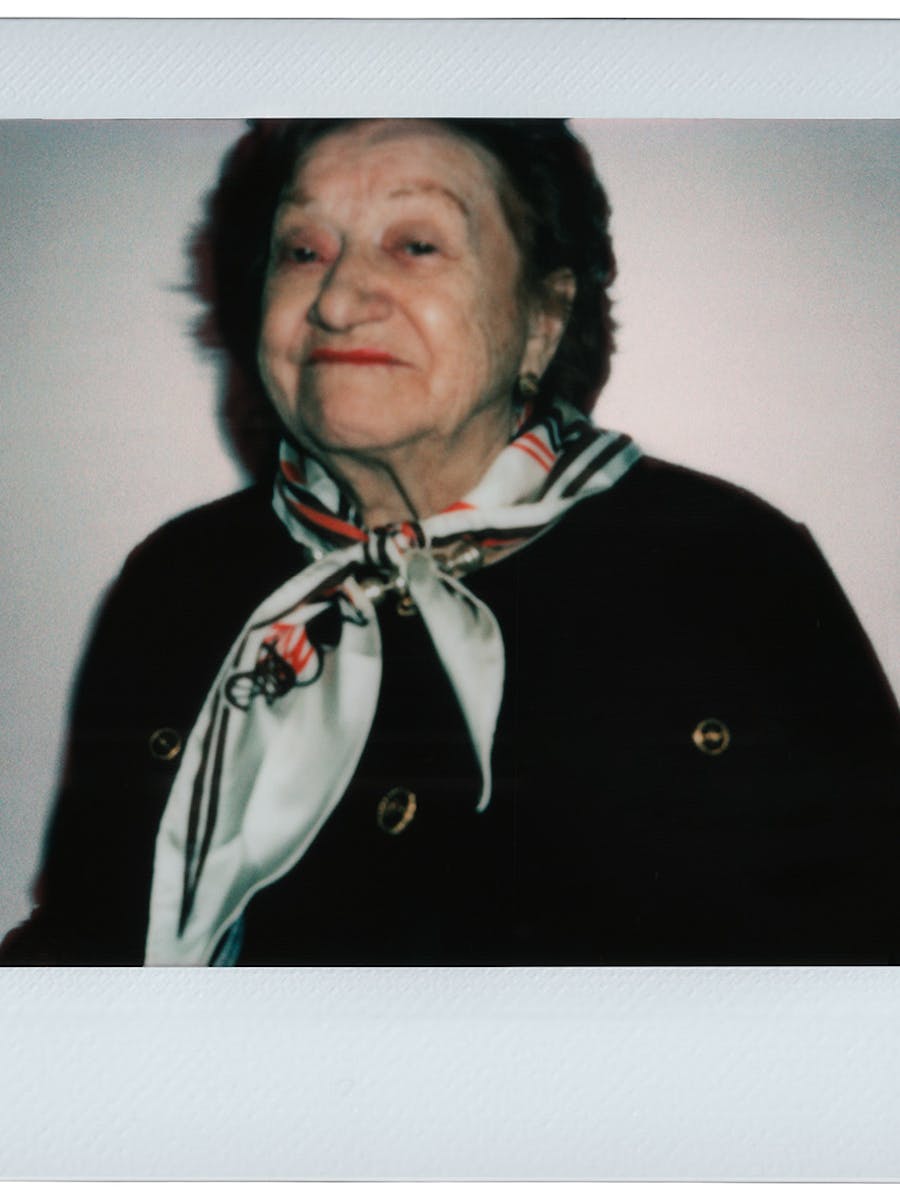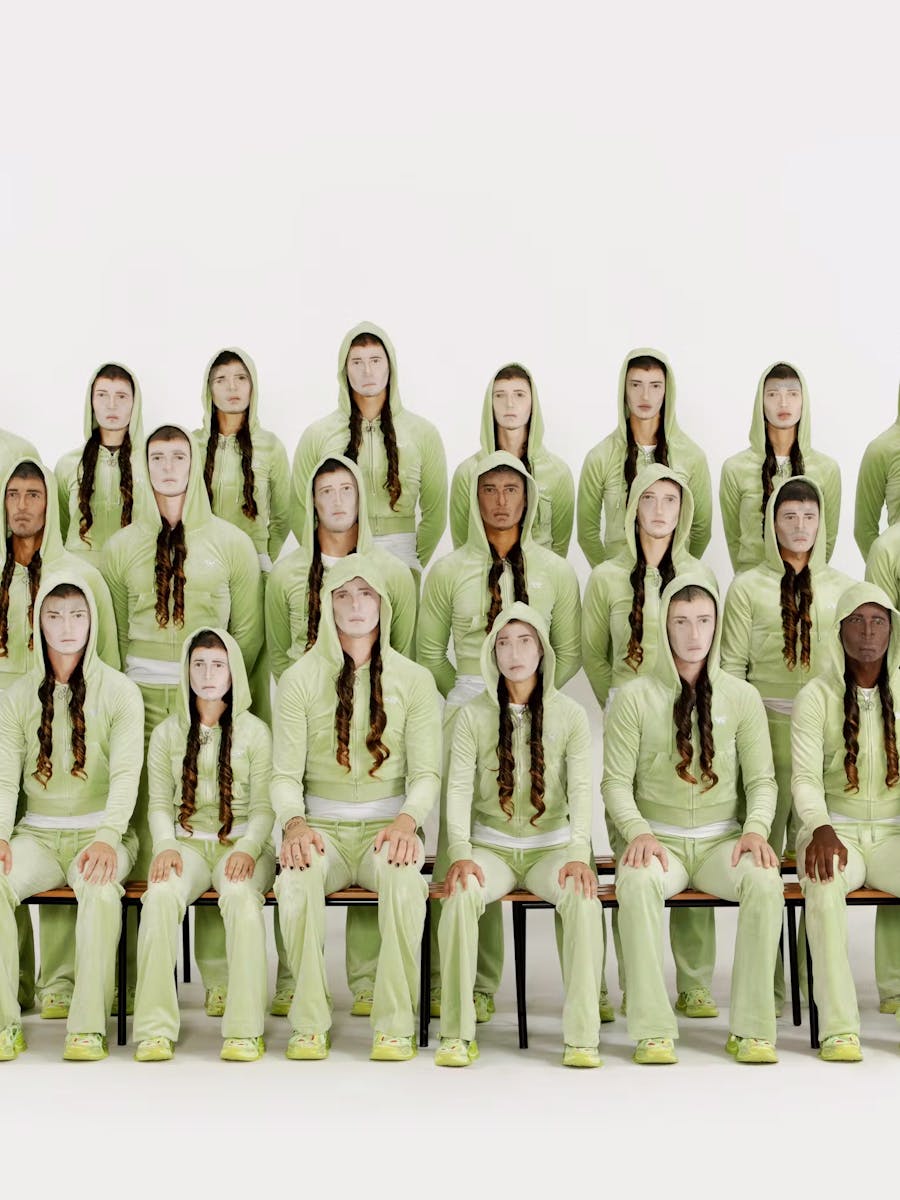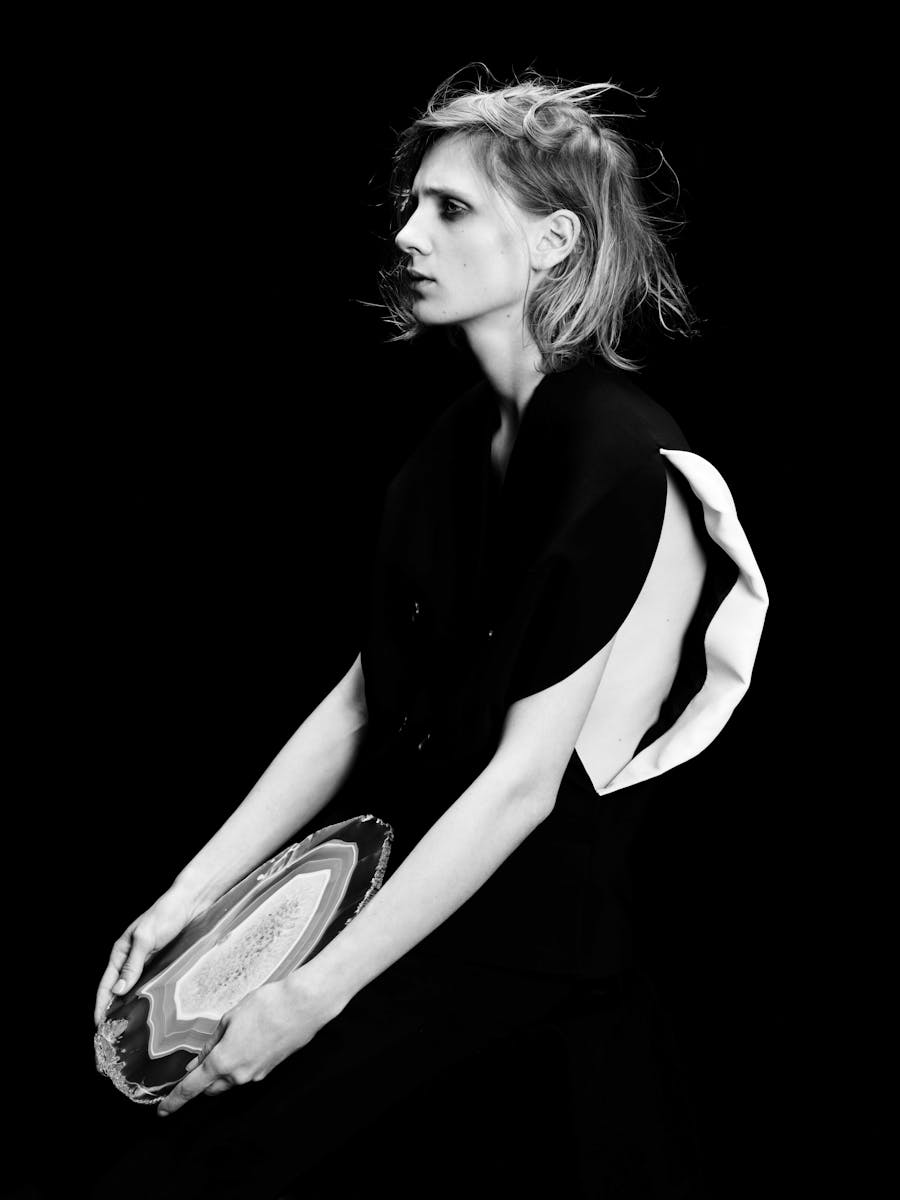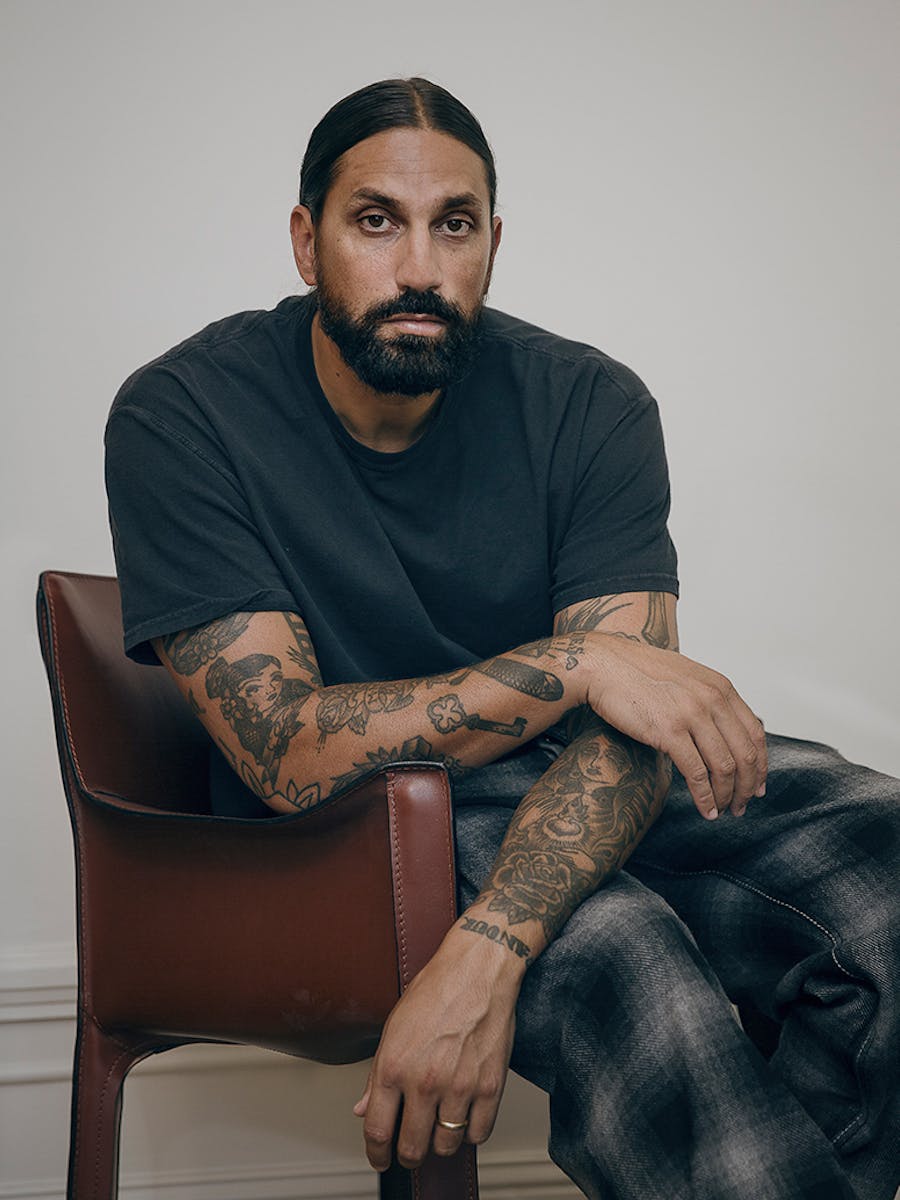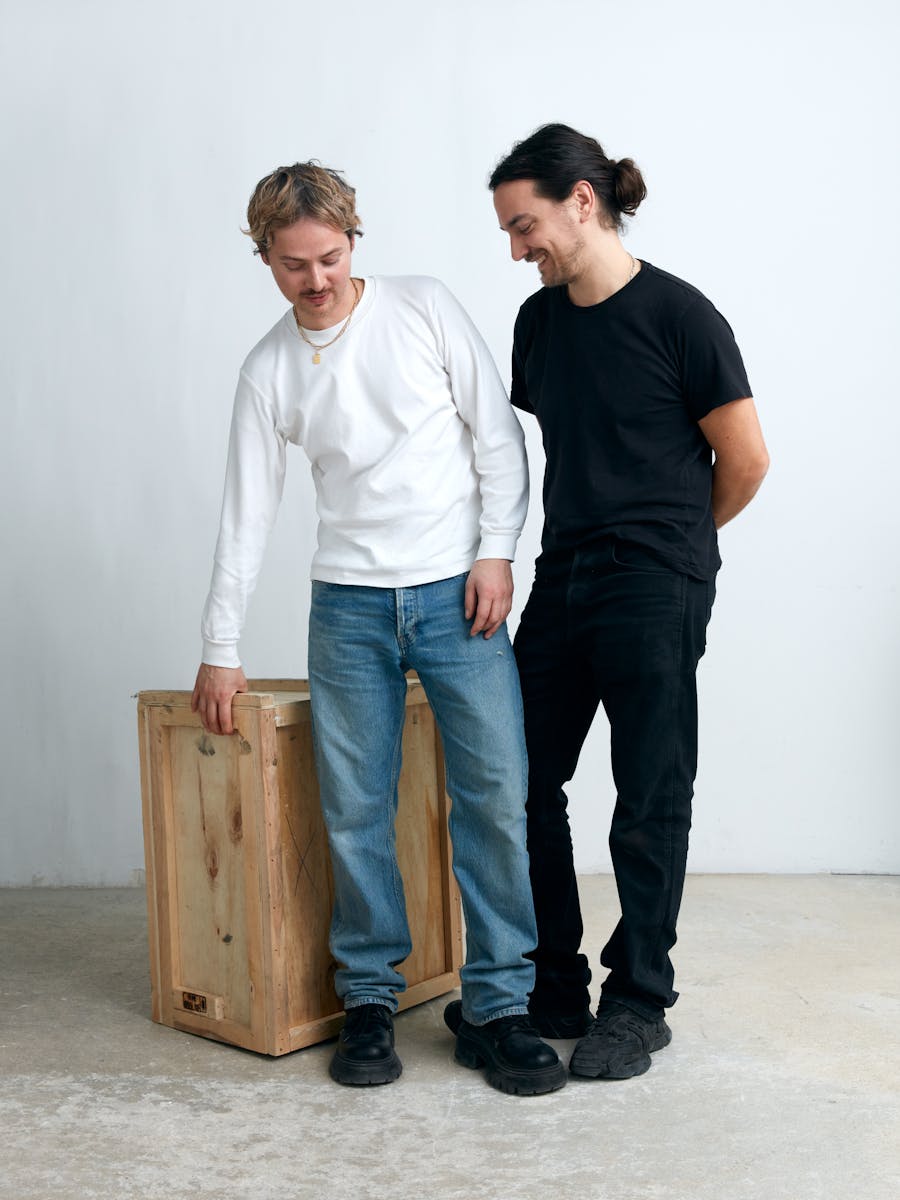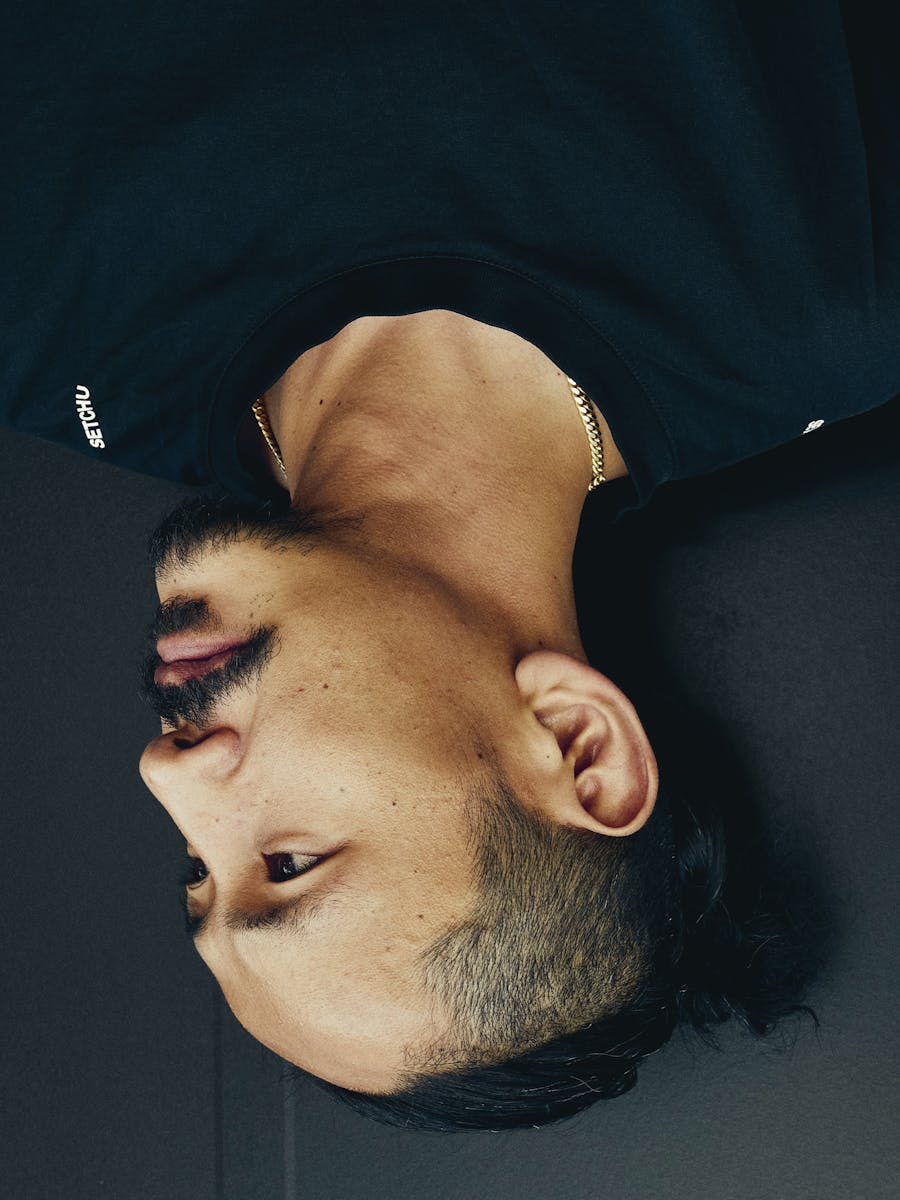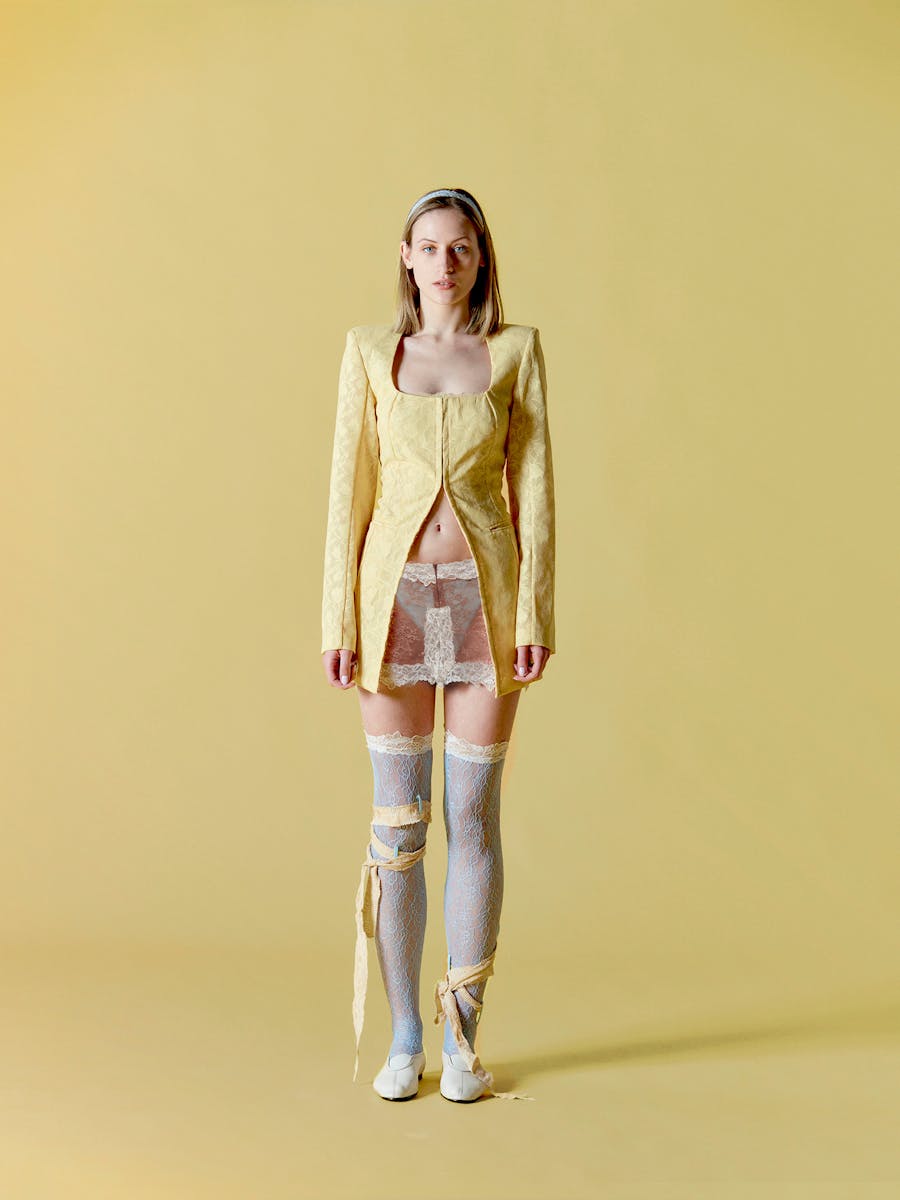Riccardo Tisci broke in to the fashion world through the windows. His first shows, clandestine happenings in the deserted parking garages of Milan, allowed him to make his name by annexing to Italian luxury wear the hitherto virgin territory of the underground. Hailing from a background that could not even be described as modest, trained at the best fashion school in the world (Central Saint Martins, the alma mater of, amongst others, the irreplaceable Alexander McQueen), he was immediately labeled ‘gothic’. His work is certainly dark, but not exclusively so. And he quickly left concrete basements behind him. Propelled to Givenchy, he quickly ousted the too neatly coiffed ghost of Audrey Hepburn. At Avenue Montaigne Riccardo does what he wants not what he should.
The world he creates is one that is in a state of perpetual effervescence, full of poetic contradictions: masculinity and femininity, machismo and sensitivity, darkness and brightness, Eros and Thannatos… He has ennobled streetwear and formed a gang which is perfectly in sync with a world where it is becoming more and more important to affirm difference. In his universe, a common aesthetic brings barriers crashing down, leveling all hierarchies : gender, religion or skin colour. Let those who love him follow him? From street kids to Hollywood stars, his fan club is vaste.
The designer has also made just enough enemies to ratify his talent in the eyes of the public. And nothing stops him: he is always hungry, always pushing the envelope, always looking for something bigger, better, more beautiful. In the process he eludes all definitions. This refractoriness (assuming it is not a premeditated pre-emptive escape) is the ultimate symbol of a natural tendency to disruption, quite impossible to escape.
Do have any idea of the way your brain works, especially regarding your creations?
R.T : I’m not sure how my brain really works, but what I feel is that it’s definitely more oriented on the emotional part. I am all about instincts, feelings. When I see something that will trigger a creative impulse in my mind, I can’t explain it, it just creates a deep emotional connection, something that takes place in my heart, rather than in my brain. You know when you feel that pressure in your stomach that sort of tells you something great is happening in front of you and it’s impressive and it drowns you in a ton of feelings. Emotion is always the base of my creation. Then I try to structure it into something more « thought of », I guess that would be where my reason and my brain comes in : it starts from a crazy idea, an emotion, and turns into something real halfway in the process.
How would you describe your creative process, how do you feel it happens?
R.T : My creative process is very visual. I am a very referenced person, I see the world of fashion and beauty in general in references : whether something channels a painting from a certain era or a particular architecture, I often see the visual reference pop up in front of me. And given that the eye is in direct connection with the brain, I’d say there is a special form of imprint on my brain in the way I work. The things I see and that influence me so much, the visual ideas that usually are the base point of all my work, they’re like stamps on my print. As if when I saw something, the trace left on my brain was so deep, that it has to come out one way or another.
Do you think there is such a thing as a conscious creative process ?
You know, it’s all about what I see and what creates an emotion inside of me. Actually, it’s not only the visuals, sometimes I can get inspired by a smell or a sound. Music can get me in a creative trance and I can only design by myself with very loud music in my ears. It’s interesting what that says about the connection to my brain. It probably means that the stimulation of those senses, the ones that are in direct contact with my brain, are probably the start of everything in terms of creativity for me. So yes, there is sort of a process in my creative conscience, because I agitate my senses until something comes out of me, so you could find some kind of pattern in that, but I always get different results, so there is a part of chance as well.
Do you get influenced a lot by your environment, people around you? The countries you visit?
R.T : Yes, you know the actual street is my biggest inspiration. It’s very interesting for a designer to see how their own clothes are worn in the street, the way someone else decides to style them, what associations they make, etc. Sometimes I actually think : ‘oh, I never thought of that!’, and you start from there to look for new proportions, research ideas. The people really are my oxygen, I love going out, I love going to clubs with my friends, I love getting all that energy from the outside world, to get out of my studio and see the world, and the people. I travel a lot too, and that is one of my biggest inspiration sources... Every culture is so different, and every time I have gone somewhere that shocked me culturally, I digested it my own way and turned it into a collection.
Do you think your education plays a big part in all that ?
R.T : Yes, of course, education is key in learning how to deal with the world. How to deal with human relationships. It’s the basic status in everything, we can only interact with each other, and get something out of each other if we place ourselves in a universal language that is respect. And that only comes from education and your surroundings.
Do you compare your ideas with the ideas of others?
R.T : I don’t really compare my work to my competition. Because in the designer brands who have such strong identities, I think we have all made a very clear job of defining a proper identity. At least that is what I’m trying to do, is to build these strong Givenchy codes that resonate only in the world of Givenchy. So over time we do something, we try to stay on those lines, and not go anywhere else, so we don’t have to think of what others do really, as long as we stick to our guns.
Are you conscious that your work brought a form of disruption into the fashion industry? What is disruption for you?
R.T : I often hear that... bringing a disruptive eye to fashion. It’s a compliment I guess. But I always try to think, what is disruption? To me, it is a way of doing things that is different enough to break existing codes but not too much to drift away from people’s reality. So yes, when we cast a transgender supermodel in our campaign, it was disruptive, because it wasn’t a thing at the time, but it was natural and organic, we didn’t do it looking for attention, we did it because we believed in it as a cause. And I have a million other examples like that : when we opened the show to the general public in NYC on 9/11 (2015, for the exceptional Givenchy show in the United States, ed), it wasn’t because we were trying to have buzz around doing it, it was because we wanted the celebration to be real, not just closed between the walls of a usual elite. What’s the point of showing in the street if you’re not letting actual citizens stop by and see the show? And the thousands of people who were there reminded me of why we did it, not because we were trying to be disruptive, but because we truly are.
Do you think your creative process has evolved throughout your life? How?
R.T : Yes and no... Of course, there is a decade of work ever since I started, so your ways change, the way you think of ideas or create things evolve with maturity. You now see ideas through the lens of a certain market or a certain merchandising sense. I can’t deny that. But still, my pure creative process hasn’t changed. I still work on emotional inputs. Creatively, I evolve around meeting people or visiting unknown places. The thrill, the rush of that, maybe it’s my brain, maybe it’s in my heart, I’m not sure, but all I know is it’s always been there.
